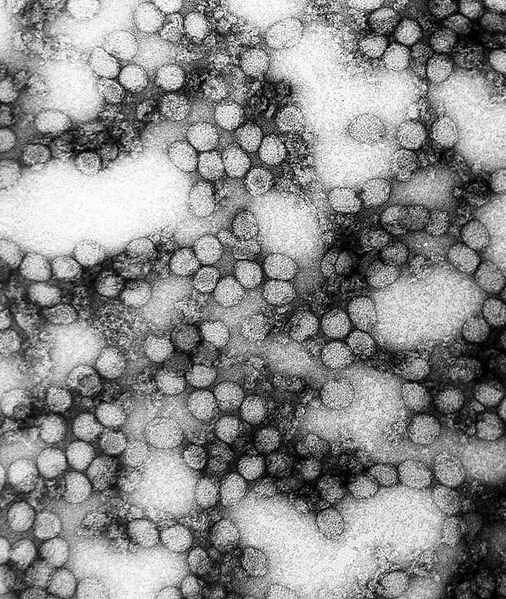Facts
Aedes aegypti mosquito has a long history in the Western hemisphere as well as the rest of the world. This mosquito has created problems throughout the globe. It was most likely brought to new countries on exploration ships from Europe during the time of European colonization of Africa. Yellow fever, a viral infection that is transmitted by Aedes aegypti, caused more deaths in the U.S. troops during the Spanish-American War in 1898 than enemy soldiers (University of Florida, 2008). For more information about the demographics of Aedes aegypti, visit our Habitat page.
 Not only is Aedes aegypti found in only the western hemisphere, but
it is also common in other continents as well. Yellow fever is
regularly found in many African countries as well as some South
American countries. Yellow fever
causes around thirty thousand deaths every year (World Health
Organization, 2003). The yellow fever vaccination reduced the number
of cases and deaths. South America reports about five hundred cases
every year. Many of these are men who work in forested areas. Approximately twenty
percent of people affected with a severe condition of yellow fever
pass away due to the disease (Center of Disease Control and
Prevention, 2002). Not only is Aedes aegypti a vector
for yellow fever but the dengue virus as well. There are more
human deaths caused by dengue virus than any other disease that is
carried by an arthropod vector. The fatality rate for this
disease is one to five percent (Harrington et al., 2001)
Not only is Aedes aegypti found in only the western hemisphere, but
it is also common in other continents as well. Yellow fever is
regularly found in many African countries as well as some South
American countries. Yellow fever
causes around thirty thousand deaths every year (World Health
Organization, 2003). The yellow fever vaccination reduced the number
of cases and deaths. South America reports about five hundred cases
every year. Many of these are men who work in forested areas. Approximately twenty
percent of people affected with a severe condition of yellow fever
pass away due to the disease (Center of Disease Control and
Prevention, 2002). Not only is Aedes aegypti a vector
for yellow fever but the dengue virus as well. There are more
human deaths caused by dengue virus than any other disease that is
carried by an arthropod vector. The fatality rate for this
disease is one to five percent (Harrington et al., 2001)
Because of the outbreaks of the detrimental
dengue and yellow fever viruses, many different eradication programs
were being put into play
around the world. These programs started in mid-1900s. Countries did this through mosquito
control and educating citizens of precautionary measures that can be
taken to prevent mosquito reproduction. The failure of citizens to stay committed and fund the
programs made this eradication system fail and the mosquito
population quickly bounced back to its previous range. The Pan American Health Organization came up with an
eradication program in 1947 for putting an end to yellow fever cases. In 1965, there were nineteen
countries that had fulfilled the program. These countries were free
from Aedes aegypti
for a short amount of time but, the
mosquitoes came back into North and South Americas and expanding its
range as it came back.
Although insecticides work, they only
continue to be funcional until there is a resistance. Doses of malathion, an organophospate
insecticide, were used for control until resistance to the pesticide
was developed and it was unable to control the  populations of the
mosquitoes (University of Florida, 2008). After 45 generations that
were exposed to malathion, Aedes aegypti created a high
resistance to this insecticide (Hidayati et al., 2011). They have adapted to the
environment making them quick to recover from disturbances due to
natural phenomena or human interactions. To learn more about
eradication programs, visit the Control
page. Eradication programs aren't the only opportunity for
controlling the spread of diseases. Researchers are using
experiments to understand the diseases to attempt to shut down the
virus. One experiment showed that mosquitoes with engineered
RNA, called Carb77, displayed a high resistance to type 2 of the
dengue virus. Carb77 breaks down the viral envelope which can
stop the virus from replicating and help control the spread of this
strain (Franz et al., 2006).
populations of the
mosquitoes (University of Florida, 2008). After 45 generations that
were exposed to malathion, Aedes aegypti created a high
resistance to this insecticide (Hidayati et al., 2011). They have adapted to the
environment making them quick to recover from disturbances due to
natural phenomena or human interactions. To learn more about
eradication programs, visit the Control
page. Eradication programs aren't the only opportunity for
controlling the spread of diseases. Researchers are using
experiments to understand the diseases to attempt to shut down the
virus. One experiment showed that mosquitoes with engineered
RNA, called Carb77, displayed a high resistance to type 2 of the
dengue virus. Carb77 breaks down the viral envelope which can
stop the virus from replicating and help control the spread of this
strain (Franz et al., 2006).
It is important for the nation to know about current cases of yellow
fever or dengue in the country to prevent outbreaks. According to
Article 4 of the International Health Regulations of 1969, whenever
there is a case of yellow fever, the administration needs to notify
the World Health Organization immediately. With knowledge of the transmission, it has been
made essential for measures to be taken around the perimeter of
ports and airports to eradicate any stage of Aedes aegypti (World
Health Organization, 1983). This enforcement is stated in Article 19
of the International Health Regulations of 1969.

